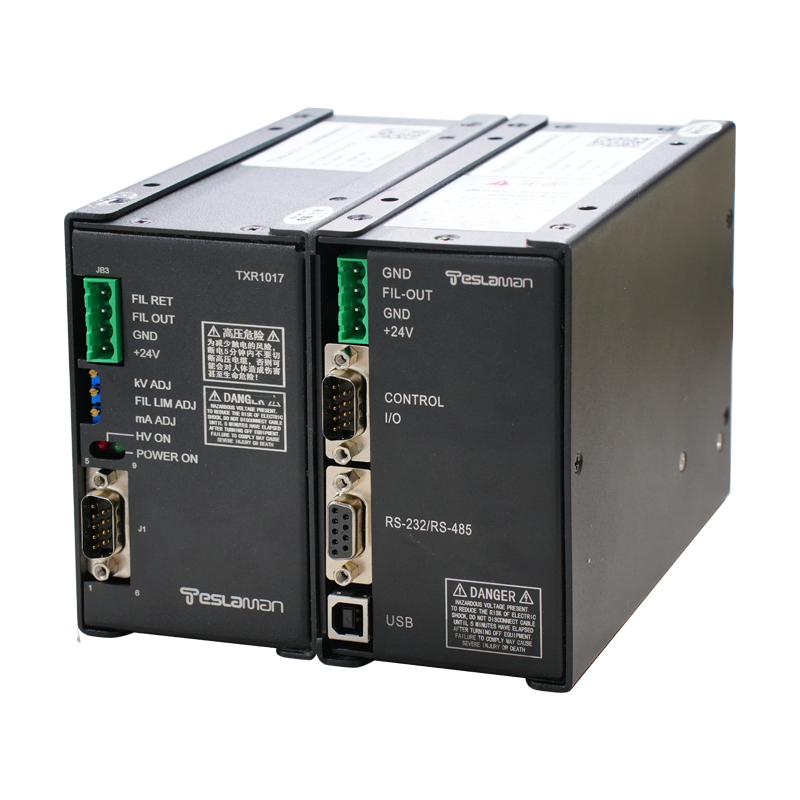High-Voltage Power Supply Solutions for Food Inspection
In the field of food safety and quality control, the accuracy and reliability of food inspection technologies are of utmost importance. As a core component of food inspection equipment, such as mass spectrometers, chromatographs, and biosensors, the performance of high-voltage power supplies directly affects the precision and efficiency of inspection results. Given the special requirements of food inspection for power supplies, such as low noise, high stability, and wide dynamic range, targeted solutions need to be proposed from the aspects of technical architecture and functional design.
1. Low-Noise and High-Stability Design
Food inspection equipment is extremely sensitive to power supply noise, and even slight electromagnetic interference can lead to distortion of detection signals. High-voltage power supplies control the output ripple at the microvolt level through optimized topology and shielding designs. The adoption of multi-stage filter circuits, electromagnetic shielding technology, and soft-switching modulation strategies can effectively suppress switching noise and reduce interference with precision equipment such as mass spectrometers and spectrometers. In terms of stability, high-precision reference sources and dual closed-loop feedback control are introduced, limiting the output voltage fluctuation to less than ±0.05%, ensuring the consistency and repeatability of signals during inspection and meeting the stringent requirements of quantitative analysis of food components.
2. Wide Dynamic Range and Intelligent Adjustment Functions
Food inspection covers various scenarios, from trace hazardous substance detection to nutrient analysis, requiring power supplies with wide dynamic range output capabilities. New high-voltage power supplies can flexibly switch within a voltage range from millivolts to kilovolts and support current output from nanoamperes to amperes through modular design and intelligent control algorithms. For example, in pesticide residue detection, the power supply can dynamically adjust the ion source voltage according to the requirements of gas chromatography mass spectrometry (GC MS), enhancing the ionization efficiency of the substances to be detected and increasing the detection sensitivity by 30%. In protein content detection, by precisely adjusting the power supply parameters of electrophoresis equipment, the separation resolution can be increased by 25%, effectively distinguishing proteins of different molecular weights.
3. Enhanced Safety Protection and Environmental Adaptability
Food inspection laboratories usually contain various chemical reagents, creating a challenging environment with corrosive gases and humidity, posing challenges to the safety and durability of power supplies. High-voltage power supplies feature fully sealed anti-corrosion housing designs and are equipped with built-in gas sensors and humidity monitoring modules. When excessive concentrations of harmful gases or high humidity are detected, the protection mechanism is automatically activated, cutting off the power output and issuing an alarm. In addition, multiple electrical isolation measures and overvoltage, overcurrent, and leakage protection devices ensure the safety of operators and equipment. In high or low-temperature environments, the intelligent temperature control system can automatically adjust heat dissipation or heating, enabling the power supply to operate stably within a temperature range of 10°C to 50°C, adapting to inspection needs in different regions and scenarios.
4. Integrated and Automated Collaborative Solutions
To improve inspection efficiency, the integration level of high-voltage power supplies and food inspection equipment is continuously increasing. Connected to the main control system of the equipment via standardized communication interfaces (such as RS 485, USB), remote configuration and real-time monitoring of power supply parameters are enabled. Combined with automated inspection software, the power supply can automatically switch inspection modes according to preset programs. For example, in the heavy metal detection process, it can automatically adjust the high-voltage parameters of the atomic absorption spectrometer, reducing manual intervention and shortening the single inspection cycle by 40%. Meanwhile, the built-in data recording function of the power supply can store operation parameters and fault logs, facilitating subsequent traceability analysis and equipment maintenance.
The innovation and improvement of high-voltage power supply solutions for food inspection provide solid technical support for ensuring food safety and enhancing food quality. As food inspection technologies evolve towards rapid and intelligent directions, high-voltage power supplies will continue to optimize their performance to meet increasingly complex inspection requirements.




















